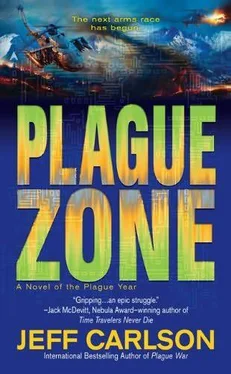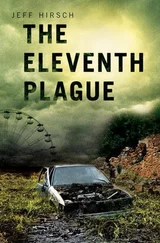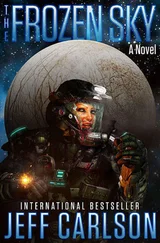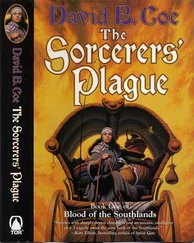They gave her a chance to redeem herself: to create new nanotech. Their own people had been working on the mind plague. Kendra was the catalyst in making it operational. They said the new contagion was intended to be a bloodless method of ending the war. They said they only wanted to unite both countries under a single government before another nuclear exchange wiped out these last few safe islands above the machine plague. They didn’t tell her Ruth’s vaccine was widespread by then, permitting everyone to reclaim the world below ten thousand feet. Nor did Kendra ask to go outside to verify her location. She’d seen enough of snow and wind and desolate rock. She loved her warm prison. The women who tended to her were soft-voiced and kind, completely unlike anything on her mountaintop. She wanted to believe them.
Kendra began to work again. She escaped into the pristine logic of her microscopes, and, when she occasionally stalled on the mind plague, she turned her skills to other projects, daring to reexamine the archos tech for weaknesses. There must be some way to destroy it.
Her handlers let her play with different lines of research because it kept her happy. She also came to understand that they hoped her efforts would jump-start new possibilities in their weapons programs. Too late, she discovered Ruth’s vaccine in her own blood along with the booster nanotech. Too late, she learned she’d repeated her unholy mistake, providing them with the power to tear the world apart again.
She went on strike. It didn’t last. The MSS used sleep deprivation, drugs, and cold to compel her. She quit eating, but they inserted a gastric feeding tube and IVs to sustain her — and when she failed to rouse herself, the pain began. Electricity. Knives. She swore to help again just to make it stop.
She’d become erratic. She knew that. Sometimes she exaggerated her behavior when she was actually in control of herself, creating opportunities to conceal and deceive. It also helped that she’d picked up a good deal of their language by then. She pretended she wanted to be one of them, which she hoped was comforting to her overseers. She refused to speak in anything except Mandarin, deliberately confusing her words and mixing her written notes.
Kendra knew they hoped to improve the mind plague to introduce thoughts to infected people, not only disrupting their capacity to think but shaping and encouraging cooperative moods. They were years away from this magic. Merely teaching the nanotech to interrupt higher brain function was impressive enough — but, showing ambition, she convinced them to increase the nano’s AMU to allow the space necessary to eventually house those programs. The Chinese didn’t realize the extra bulk she built into it also held a coded message.
Unfortunately, she couldn’t be sure anyone would ever find her cry for help. Worse, she didn’t make the mental leap to using the new self-governing markers to reverse who the mind plague infected until after they’d taken both kinds of nanotech away from her.
Her best chance to stop them was her continued work with the archos tech. She crafted a new machine plague, first paring down its size for increased speed. She also replaced its heat engine with a simple protein-based reaction. That was easy. The archos tech was nothing if not efficient in disintegrating organic tissue, which she taught it to burn for energy. It would be enough to destroy everyone in their nanotech programs, including herself.
At last she was ready. Too late. More than anything, those bleak, miserable words summed up her life. Too late. She hadn’t been able to cut her wrists deeply enough on her mountaintop, and she’d kept eating in small amounts even after she swore an oath to God and the devil to let herself waste away, but the pared-down archos tech would kill her exactly as the original model should have done years ago. Kendra never expected to survive beyond opening the first or second vial.
She was wrong.
Saint Bernadine had been retrofitted by the Chinese. Even so, the missiles’ shock waves brought most of the building down. Trapped in its dark halls, their research teams and military personnel needed hours to pull each other free. At least a dozen people were hurt or missing. No one else came to help. They kept her away from the windows, and the gloom was everlasting, but Kendra thought it was afternoon before they escorted her to her basement labs to recover her gear. Major Su said they needed to be ready to move.
There weren’t enough of them to carry everything, so Kendra filled her pockets with sample cases and flash drives — and eight slim vials of nanotech. Then they brought her outside into the growing beat of a helicopter.
The aircraft flew out of the south as she walked away from the other men and women, staring out across the black, flattened city. They let her keep her distance. They were accustomed to her moods, and there was nowhere for her go.
The helicopter landed in an area cleared by Major Su’s men. Kendra didn’t know if they intended to ferry her to the sister lab or if they were bringing those teams north. Maybe she should have waited. She didn’t have that much self-control. She screamed in anguish and rage as she threw the first vial.
Major Su fell with his cheek eaten away, clawing at his pistol. Others were torn apart through their necks and chests. Like the original archos tech, her accelerated machine plague found its quickest entrance through the sinus cavities and lungs.
Watching them die was hellish.
It felt like coming home.
She had killed unimaginable numbers and, more personally, she had directed people to murder and cook eighteen human beings on her little mountaintop. What were a few more? Kendra delighted in feeling anything other than helpless. She became a dark goddess — the destroyer of the worlds.
Laughing, she strode toward the chopper as the pilots powered up again. They began to lift away. She threw another vial, hoping to feel the nanotech across her own body in the blistering wind. But her aim was true. The vial passed through the open side door and the plague never escaped the aircraft, which wheeled onto its side and slammed into the ruins a hundred yards away. Then she was alone except for three wounded and a woman who called herself Jane, one of her caregivers, who had always been respectful and sweet.
Kendra killed them, too.
A second helicopter came as she hiked into the rubble. It buzzed past her only to return, landing in the city ahead of her… and she met Chinese soldiers in the ash as the chopper flew back overhead. Her mind disappeared. She must have killed them all, but she had no memory of it. When she gradually returned to herself, she was sobbing against the straight, solid little face of a mailbox. Somehow she’d found one thing that was still upright, although caked with soot. The mailbox remained bolted to the sidewalk and she leaned against it, surrounded by untold miles of flattened buildings and debris.
It was the third helicopter that brought Cam to her.
Alekseev and Obruch argued together in the cockpit until Deborah cut in, hearing something she didn’t like. “We need to see this through!” Deborah called forward.
“We are not convinced this hunt is useful,” Alekseev said. “Let us try to get her out of here.”
Cam shook his head. “For what? The answer is here.”
“You are mad,” Alekseev said, but then Obruch shouted, “Tya! B M010 cmopoHy!”
He banked the chopper to the left. They were about hundred feet above the blast-swept neighborhoods. At first, Cam couldn’t tell what had drawn Obruch’s gaze. There were no variations in the pattern below. The homes were small, eroded squares. The streets formed less-cluttered lines in the wreckage. Then he saw a group of structures with a hint of red in the torn rooftops, which was unusual. There were also the shapes of parking lots in front and a big athletic field on the other side. A school campus?
Читать дальше












